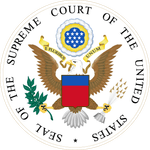
In the past two weeks, the Supreme Court overturned grants of relief for two death-sentenced prisoners. In both cases, lower courts had found they received ineffective assistance of counsel at trial. The Court’s rulings are in line with its other decisions in death penalty cases restricting appeals for death-sentenced prisoners and extolling the importance of “finality” over merits-based review.
Under Strickland v. Washington (1984), an attorney is ineffective when 1) his performance is deficient, and 2) his deficient performance prejudices the defendant. When an attorney fails to present certain evidence, a court weighs the new evidence alongside the aggravating and mitigating factors present in the case and asks whether there is a “reasonable probability” that the outcome might have been different if the attorney had presented the new evidence at trial.
Thornell v. Jones
The Supreme Court granted certiorari in December when officials in Arizona asked for a reversal of the Ninth Circuit’s grant of relief to Danny Lee Jones. The Ninth Circuit had overturned Mr. Jones’ death sentence based on his attorney’s failure to introduce key mitigating evidence of Mr. Jones’ brain damage, childhood physical and sexual abuse, and psychiatric problems. The Court appeared poised to rule in Arizona’s favor at oral argument in April, when most of the justices made comments suggesting that the Ninth Circuit had improperly applied the Strickland standard for determining whether a defense attorney’s conduct prejudiced the defendant. However, the justices appeared to disagree on whether the Court should vacate and remand the case—giving the Ninth Circuit another chance to conduct the Strickland analysis—or if it should reverse the case and impose its own judgment as to whether counsel was ineffective.
On May 30, the Court issued a 6-3 opinion in favor of Arizona, reversing the Ninth Circuit and holding that Mr. Jones did not receive ineffective assistance of counsel. For the majority, Justice Samuel Alito wrote that the Ninth Circuit “downplayed the serious aggravating factors present here and overstated the strength of mitigating evidence that differed very little from the evidence presented at sentencing.” The 16-page ruling effectively reinstates Mr. Jones’ death sentence. (See DPIC’s earlier coverage of the facts of the case.)
Justice Sonia Sotomayor dissented, joined by Justice Elena Kagan. Justice Sotomayor wrote that though she agreed the Ninth Circuit improperly weighed the factors in violation of Strickland, the “majority unnecessarily goes further and engages in the reweighing itself.” Because the “record in this case is complex, contested, and thousands of pages long,” and it “is not the Court’s usual practice to adjudicate either legal or predicate factual questions in the first instance,” Justice Sotomayor would have vacated the ruling below and allowed the Ninth Circuit to reconsider the case. This dissent closely follows Justice Sotomayor’s comments at oral argument, where she said that she agreed the Ninth Circuit had not properly balanced the factors, but told Arizona’s attorney that “we’re not factfinders, and we generally don’t weigh evidence.”
Justice Ketanji Brown Jackson separately dissented and argued that the Ninth Circuit had properly conducted the Strickland analysis to conclude that Mr. Jones received ineffective representation at trial. She said that though the Ninth Circuit’s discussion of the aggravating factors was “concise,” “there is no benchmark length for any such discussion.” She also contended that “[i]n its search for legal error in this capital habeas case, the [majority] makes many mistakes of its own, including misreading the Ninth Circuit’s opinion.” She echoed Justice Sotomayor in arguing that the Supreme Court is “not the right tribunal to parse the extensive factual record in this case.”
Alabama v. Williams
On June 10, the Court granted certiorari in an ineffective assistance of counsel case in Alabama, vacated the Eleventh Circuit’s judgment, and remanded the case for further consideration in light of the recent decision in Thornell. Like in Thornell, the state was the petitioner in Alabama v. Williams after losing in the lower federal circuit court. Alabama filed its petition eight days after the Supreme Court granted review in Thornell and asked the Court to consider Williams and Thornell together to “help illuminate recurring problems with Strickland prejudice.” While the Court did not consider the cases together, its summary decision in favor of Alabama underscores its sympathy to Alabama’s criticisms of Strickland—despite research suggesting that Strickland is a “virtually-impossible-to-fail” test for states, as courts have ruled that sleeping, drunk, and completely inexperienced defense lawyers were adequately effective.
Marcus Williams was convicted and sentenced to death for the rape and murder of his 20-year-old neighbor, a young mother, committed when Mr. Williams was 21. A few weeks after the murder, he attempted to rape another woman. Mr. Williams, who had no significant criminal history, eventually confessed to both crimes. At trial, his attorney presented only two mitigating witnesses: Mr. Williams’ mother and great-aunt. The great-aunt met the attorney that day. The women testified that Mr. Williams had a chaotic childhood, struggled after an injury ended his athletic career, and expressed remorse for the murder. However, Mr. Williams’ attorney did not use money allotted for a mitigation investigator and failed to uncover extensive evidence of trauma in Mr. Williams’ life. The jury never heard that Mr. Williams had been sexually abused multiple times by a male babysitter between the ages of 4 and 6, his mother was an alcoholic who often neglected him, he started drinking around age 12, and he came from a family with a “pervasive history of childhood sexual abuse and incest…which spans generations.”
A district court conducted an evidentiary hearing and granted Mr. Williams habeas relief in a detailed 141-page opinion, which was affirmed by the Eleventh Circuit. Both courts concluded that had the jury heard the new evidence, there was a reasonable probability that Mr. Williams would not have been sentenced to death.
Alabama argued that the Eleventh Circuit erred by only considering the new evidence in a positive light, “ignoring the bad” as in Thornell, and the new evidence could have been a “double-edged sword” that the jury interpreted negatively. However, Mr. Williams’ attorneys accused Alabama of making “significant misstatements about the facts and decision below.” For instance, Alabama claimed that the Eleventh Circuit “ignored” the attempted rape case, but the Eleventh Circuit “independently reweighed all the available evidence” from the district court, and the district court had devoted seven pages of prejudice analysis to the attempted rape. Alabama also sought to present as many similarities to Thornell as possible, but where Thornell involved three victims, four statutory aggravating factors, significantly more mitigation presented at the original trial, and a “convoluted” procedural history that included ten federal judges dissenting from a decision in Mr. Jones’ favor, Williams involved one victim, one aggravating factor, minimal mitigation, and two courts approving relief after weighing all the factors.
Mr. Williams’ attorneys made a crucial point: where the district court ruled against Mr. Jones, the district court here ruled for Mr. Williams. As a result, where Arizona argued in Thornell that the Ninth Circuit should have deferred to the district court’s detailed findings after an evidentiary hearing, Alabama was asking for the opposite relief: to punish the Eleventh Circuit for deferring to a district court’s detailed and evidence-supported findings.
With this distinction laid bare, the Court’s summary judgment in Williams following Thornell offers little guidance to appellate courts reviewing ineffective assistance of counsel cases.
Alabama’s brief argued that grants of relief for Mr. Williams and Mr. Jones “damage…the finality of convictions” and “reflect different symptoms of the same root problem—a willingness to treat new evidence as a one-way ratchet in favor of the defendant.” In other words, the appeals process may unearth new evidence that undermines the original trial and death sentence, and appellate courts may find that the new evidence mitigates the defendant’s culpability. As Justice Jackson wrote in dissent in Thornell, the “real critique does not appear to relate to the…methodology. Rather, it merely takes issue with the weight…assigned to each of the relevant facts.”
Sources
Austin Sarat, The Astonishing Lengths Samuel Alito Will Go to Execute Death Row Inmates, Slate, June 10, 2024; Amy Howe, Justices reinstate death sentence for Arizona man, SCOTUSblog, May 30, 2024; Alabama v. Williams (2024); Thornell v. Jones (2024); State’s Petition for Certiorari, Alabama v. Williams (2024); Marcus Williams’ Opposition Brief, Alabama v. Williams (2024); Williams v. Alabama (11th Cir. 2023); Williams v. Alabama (N.D. Ala. 2021); Michael L. Perlin, Talia Roitberg Harmon, and Sarah Chatt, “A World of Steel-Eyed Death”: An Empricial Evaluation of the Failure of the Strickland Standard to Ensure Adequate Counsel to Defendants with Mental Disabilities Facing the Death Penalty, 53 University of Michigan Journal of Law Reform 261 (2020).
United States Supreme Court
May 17, 2024

Tennessee Authorizes Death Penalty for Child Sexual Assault in Direct Challenge to Supreme Court Precedent
United States Supreme Court
Mar 22, 2024



